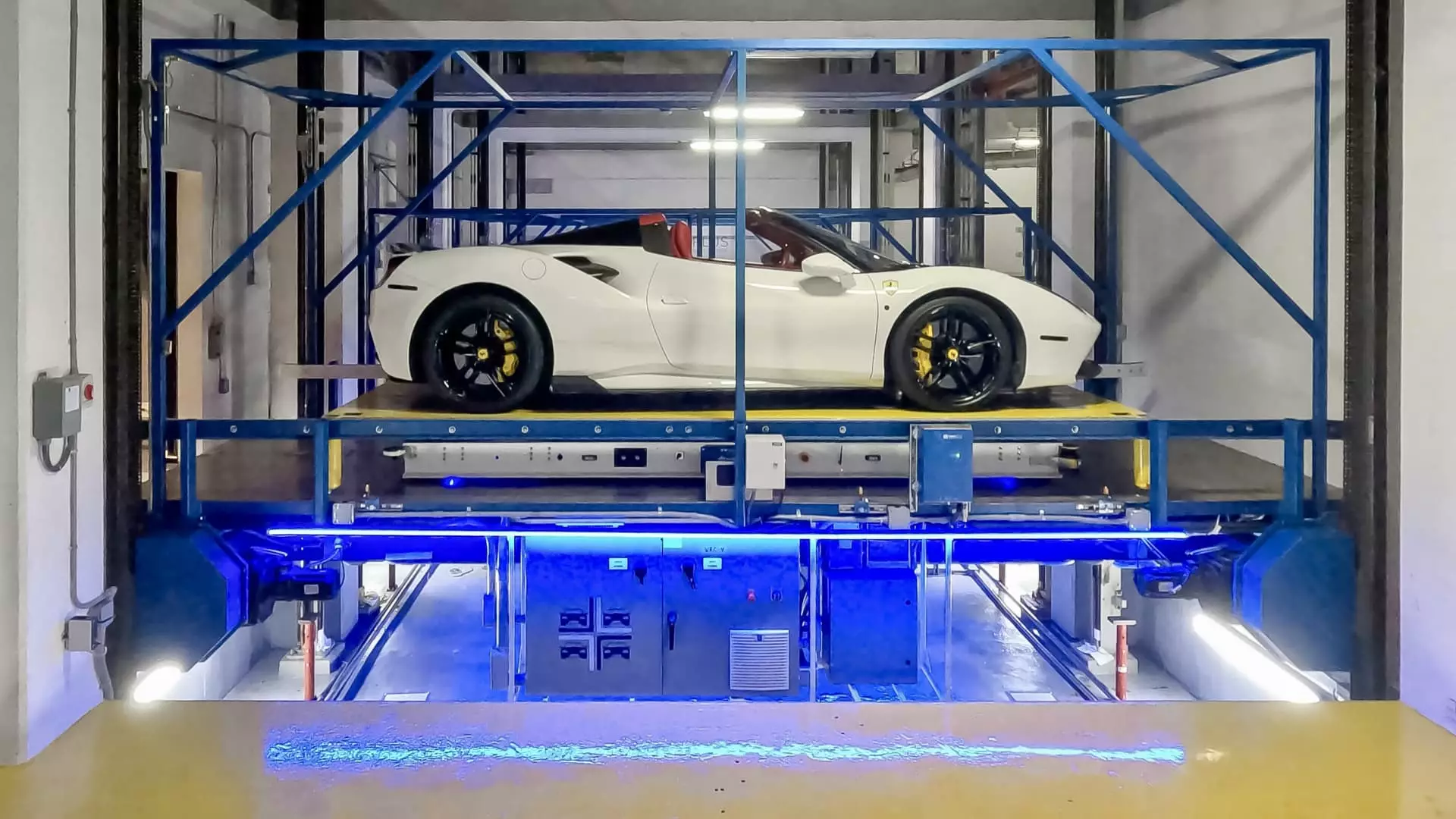As cities grow denser and the demand for housing increases, innovative solutions to perennial urban problems—like parking—are being developed. Among these innovations, automated parking systems (APS) have emerged as a viable answer to the difficulties posed by traditional parking methods. One striking example is the Brickell House in Miami, a luxury condominium that stands out for its advanced robotic garage. Inside, dozens of robots operate around the clock, enhancing convenience for residents and exemplifying the future of urban parking.
Brickell House features a 13-level parking garage that relies on a fleet of 29 automated guidance vehicles (AGVs). These robots, designed to carry vehicles weighing up to 6,000 pounds, navigate through the garage using an intricate system of lasers and embedded bar codes. The AGVs function autonomously, charged and ready to whisk cars to designated parking spots without any human intervention. This precision reduces the need for large spaces between vehicles, allowing for a more compact and efficient arrangement—sometimes squeezing cars in with merely 2 inches of clearance.
Drawing on advanced vision systems, the AGVs communicate seamlessly as they work in tandem. This division of labor optimizes movements, ensuring quick retrieval and parking of vehicles, as evidenced by a remarkable retrieval time of under four minutes, demonstrated when a Ferrari was rigged with cameras for observation. This technological infrastructure not only enhances security but also minimizes the physical footprint of parking systems in urban environments.
While the technological aspects of automated parking are captivating, the economics of these systems reveal a more nuanced picture. The installation of an APS like the one at Brickell House can range from $20,000 to $80,000 per parking spot, considerably adding to the upfront costs of building construction. However, this investment can prove beneficial as automated systems can optimize space usage by up to three times compared to conventional parking structures. Developers can thus allocate less floor area to parking, creating more room for residences and boosting sales potential.
In high-demand markets like Miami and Manhattan, where luxury real estate commands premium prices, the cost of parking spots can escalate sharply, often doubling or tripling the price of a vehicle. This reality exemplifies how developers are increasingly integrating cutting-edge technologies into their projects, ensuring they remain competitive amid a crowded real estate landscape.
The global smart parking market—encompassing everything from automated systems to digital payment processes—was valued at $6.5 billion in 2021 and is projected to rapidly expand to $30.16 billion by 2030. In North America, upscale residential projects largely drive demand for automated parking solutions. As cities struggle to accommodate increasing populations and vehicle counts, APS offers a way to make the most of limited space.
However, the journey toward mainstream adoption isn’t without challenges. Reports of unexpected failures and complications from early implementations have surfaced. Cases like that of billionaire Palmer Luckey, who encountered severe usability issues with his garage elevator, remind stakeholders that technological innovations can bring unexpected headaches and costs. Nevertheless, these incidents have also prompted manufacturers and builders to heighten reliability standards and improve their systems.
The establishment of the new ParkPlus system at Brickell House arises from a cautionary tale. The building’s previous parking setup, mired in malfunction and legal disputes, serves as a stark reminder of the potential pitfalls of adopting new technology without thorough vetting and testing. The earlier system resulted in significant financial penalties and left residents without on-site parking for years, drawing attention to the critical importance of reliability in automated systems.
According to Paul Bates, president of ParkPlus, the Brickell House case pushed the automated parking industry to prioritize innovation, reliability, and risk mitigation. Lessons learned from past failures are now being leveraged to improve systems, signaling a shift in the industry culture towards a more cautious yet progressive outlook.
Automated parking systems like the one at Brickell House represent a pivotal advancement in urban infrastructure. They not only maximize the use of vertical space but offer a glimpse into the future of living in densely populated high-rise developments. As urban areas continue to evolve, the integration of automated technologies in essential services such as parking will likely become more widespread, paving the way for smarter, more efficient cities. The ongoing evolution in this field exemplifies a commitment to utilizing technology in ways that enhance daily life for urban dwellers, pushing the boundaries of what is possible in city living.

